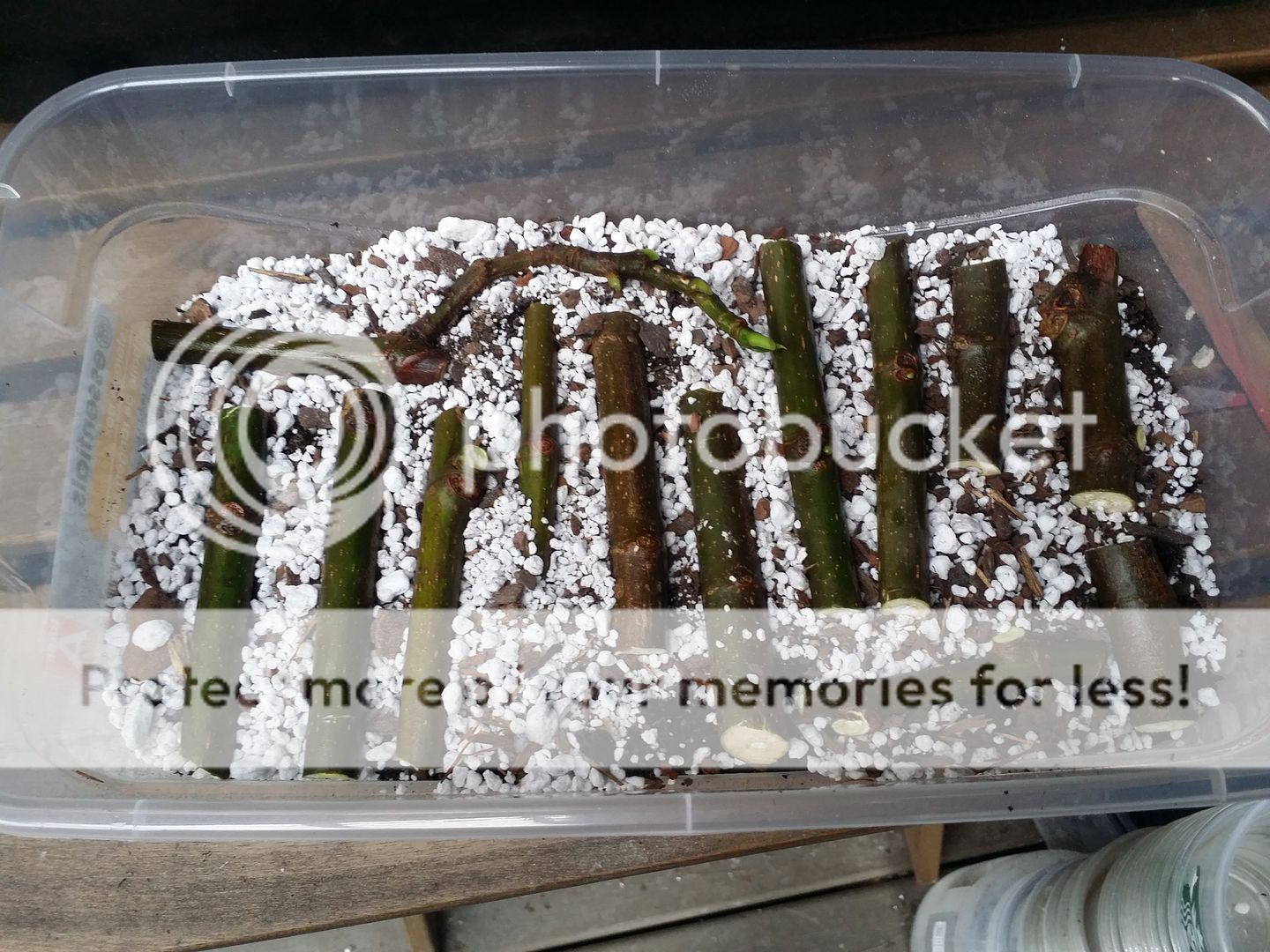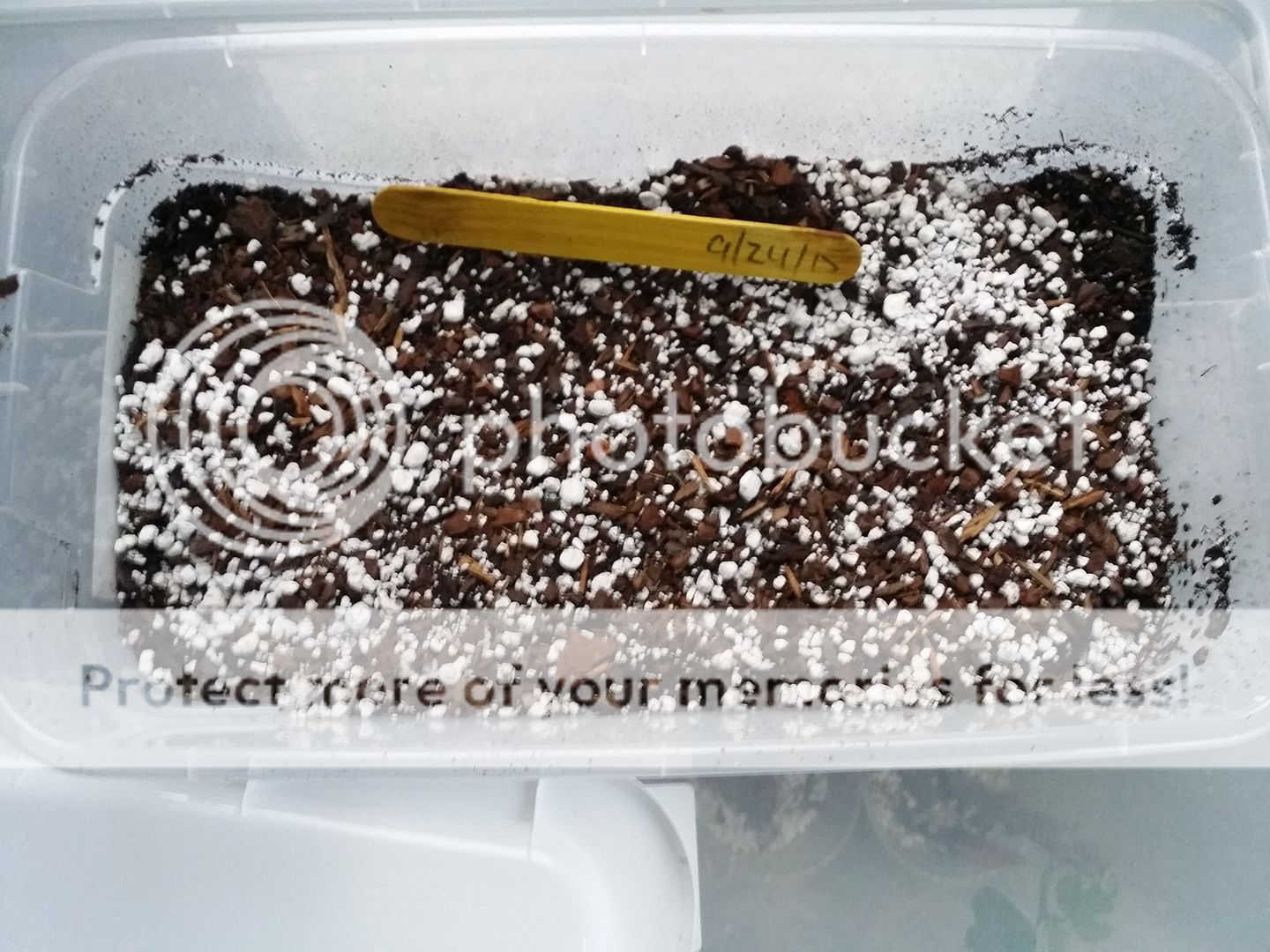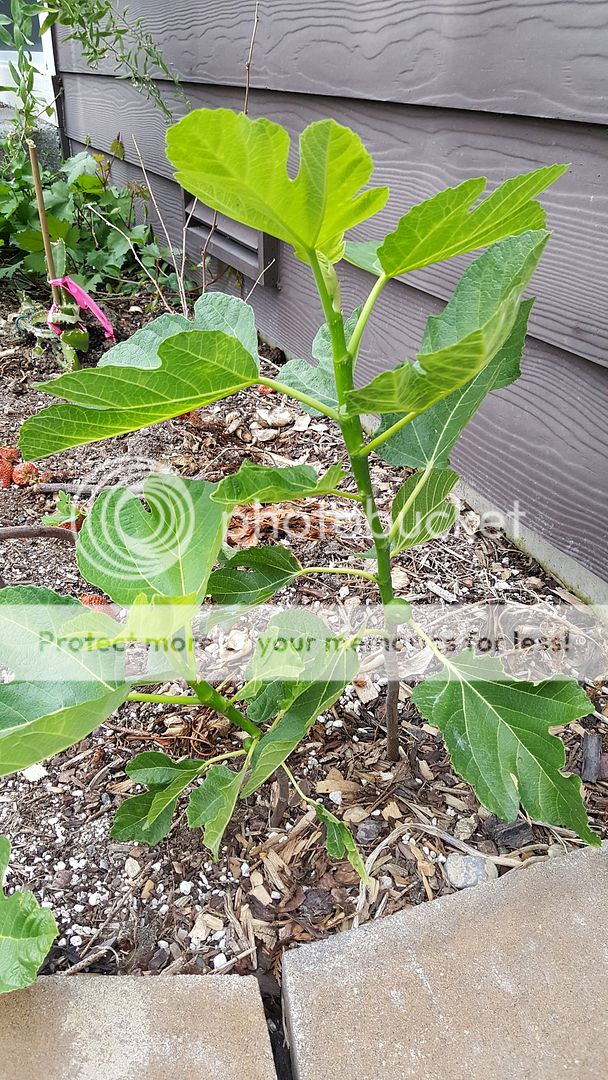I think the fun/challenging part about figs is the fact that you cannot have 100% success with rooting cuttings. So when you do get that 1 success out of many failed attempts, it's such an amazing feeling. It's like being able to hit that perfect drive off the tee or filling up on gas and paying exactly $45 flat and no change. It doesn't happen often but when it does it's a good feeling. I think it's part of the reason why I like, so many other fig enthusiasts, keep trying after many failed attempts at rooting figs. It's to get that elated feeling of success.
This season alone I've gone through hundreds of fig cuttings, and to have to individually cup each cutting is very daunting. So every day I'm literally daydreaming about various ways to root fig cuttings, easily, and productively.
I've tried various ways of rooting fig cuttings and I think I'm getting closer to dialing in a method with a high success rate.
Let's list out all the methods that I know about and my experience with them.
1. Straight into the ground:
I've planted cuttings straight into the ground and this method has a low% of success but does work in the right conditions. Make sure it is in deep shade with daily watering. Spring and fall are the best times to do this. Summer just bakes the cuttings. Tip cuttings do best for this method.
2. Bag method with the cuttings wrapped in newspaper:
Not my favorite method. It's the laziest and the cheapest way to root figs. If you clean your cuttings correctly it has a high chance of rooting and not rotting. However the problem is the during the transfer from bag to soil you end up breaking lots of roots.
3. Peat moss method: Never had luck with this. It always went moldy
4. Cup method with just soil: Hit or miss here if you over water you get a rotten fig. The biggest problem sometimes is putting the cutting in upside down.
5. My Oreo Cookie method: Love this method but it's very time consuming to do in large quantities
6. My perlite tunnel method: Still untested
7. Air Layers: tried and true but limited to just plants you have
8. Water: Terrible way to root figs. really low chances.
So whats this new method?
Sometimes we get fig cuttings that are 6-8 nodes or more. Do you ever feel like you can turn that one cutting into 2-3 plants vs 1?
In this new method. My hope is to increase the success rate while increasing the number of fig plants from 1 cutting.
Essentials to success in the Lasagna method:
HUMIDITY is the X factor between success and failure when it comes to rooting figs. It's such a fine line between having the correct amount of water and too much. I've learned over the last couple of years that the #1 mistake that many new fig growers make when it comes to their cuttings is over watering!!!!!!
So do not over WATER! Once more, DO NOT OVER WATER YOUR CUTTINGS!
They prefer to have a slight moist media to root in then soggy. And one other thing do not mist your cuttings until they have leaves. Unless you have a fan blowing in your humidity bin, the additional water will rot your cuttings.
1. Thick cuttings:
Make sure you have thick cuttings to start. The ideal cuttings are finger size and not from the tip of the branch. (Tip cuttings are better rooted standing up in a cup)
Always always scrub your new cuttings with anti-bacterial soap or hydrogen peroxide. If you don't, you'll just created a petri dish to grow mold and it's over before you get a chance. High humidity is the perfect environment for mold.
Cut the cuttings down to 1-2 nodes. Be sure it is still about 3-4 inches so that there is enough wood and stored energy. A 1 inch node cutting may make it but has less of a fighting chance.
2. A plastic shoe box or similar container:
Use a shoebox with a lid to store your cuttings in. It's important that it traps humidity.
3. Bark, perlite, soil, spray bottle:
The medium should be layered like lasagna. It should go as followed.
Top Perlite Layer - traps in further moisture
Fig cutting layer
Perlite Layer - Acts as a buffer between the cutting and the soil so it does not make direct contact with the soil, which if too moist can rot the cutting
Thin Soil Layer - to feed the new roots
Bottom: Medium Bark - bottom layer for drainage. You can probably use perlite too but you can get more air pockets with bark
Check out how many cuttings you can fit into one shoe box. I have 12 here.
Here's one I did on 9/24/15 for Sal's Corleone.
Video on how I do this.
Results of previous rootings
Update June 2016:





Very interesting! Thank you! I also do a lot with multiple varieties of figs and have good seasons and bad with rooting figs. I plan to try the lasagna method. Jack jspruill@spruillfarm.org https://certified.naturallygrown.org/producers/4126 www.facebook.com/spruillfarm
ReplyDelete